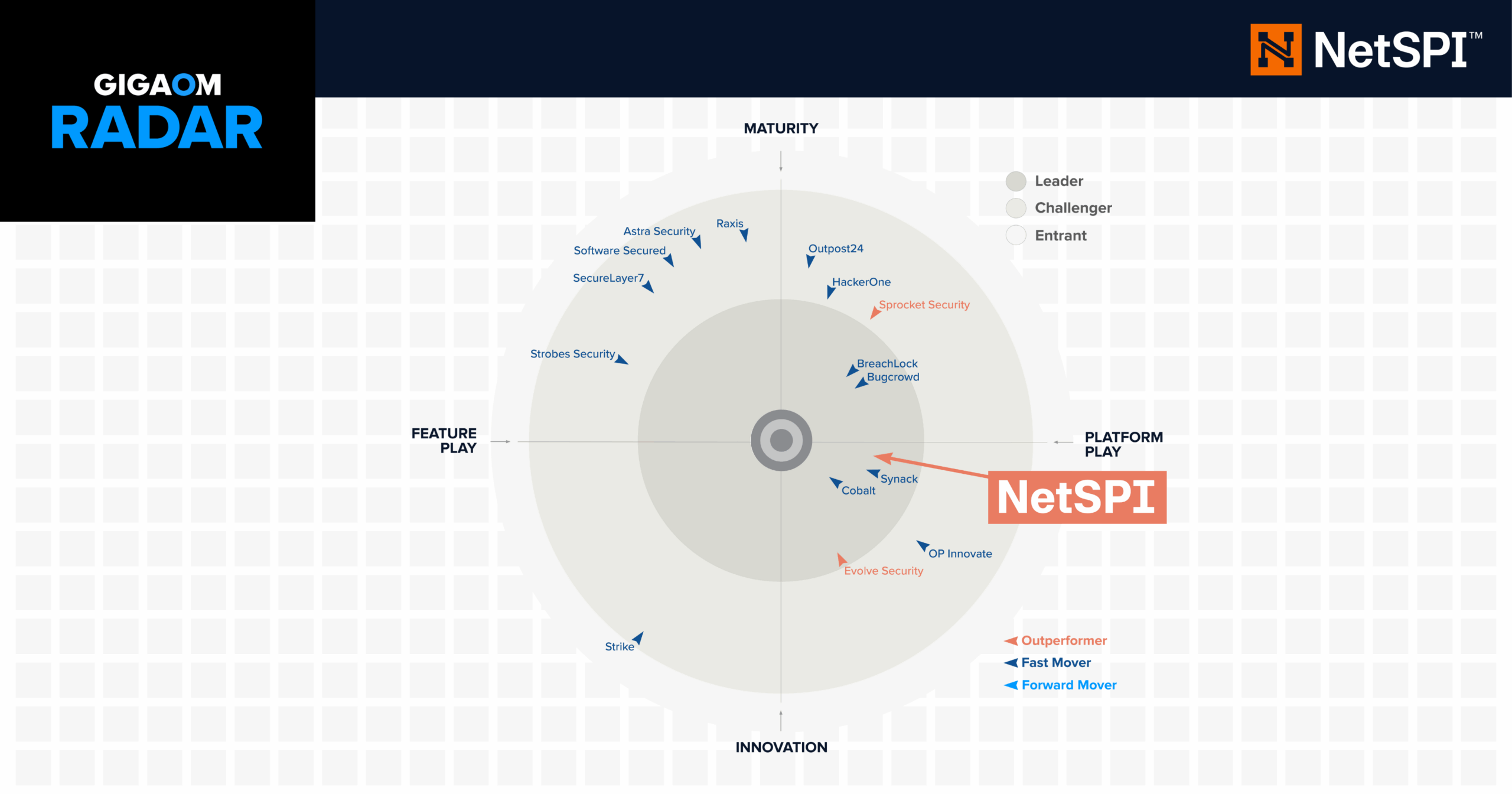Internal vs. External Penetration Testing: What You Need to Know

TL;DR
When it comes to network security testing, internal and external penetration testing are both critical components of an organization’s cybersecurity strategy. In this article, we explore key differences, benefits, and applications of each approach, as well as address common misconceptions surrounding internal and external penetration testing. Here’s what you need to know to be able to choose the right method based on your specific cybersecurity needs.
Internal vs External Pentesting
Penetration testing is a critical cybersecurity assessment tool that simulates real-world attacks on systems, networks, and applications to identify vulnerabilities before they can be exploited in the real world. It is essential at the beginning of any cybersecurity strategy, particularly given the increase in cyber threats. Proactive measures, like penetration testing, allow organizations to discover weaknesses early and prioritize remediation, reducing the risk of breaches that could cause financial or reputational damage. Read our article titled What is Penetration Testing? to learn more.
When discussing network testing specifically, two main types exist: internal and external. External penetration testing focuses on vulnerabilities that could be exploited from outside the organization’s network, such as through internet-facing services, while internal penetration testing simulates attacks from within the organization, assessing risks posed by insiders or attackers who have breached perimeter defenses.
Understanding the differences between these two types is vital for a comprehensive security posture. Internal tests help identify risks in systems that could be exploited after an attacker bypasses external defenses, while external tests focus on perimeter vulnerabilities. Together, they offer a holistic view of security, ensuring an organization’s defenses are robust across both internal and external threats. For IT managers, security professionals, business leaders, and beyond, this proactive approach is indispensable in maintaining resilient cybersecurity frameworks.
Internal Penetration Testing: What It Is and Why It Matters
Internal penetration testing can help prevent insider threats and the protection of sensitive data. This tactic focuses on simulating attacks from within an organization’s network, often by insiders or after an external breach. It identifies vulnerabilities that could be exploited by employees, contractors, or compromised accounts. The test targets internal network configurations, access controls, and system weaknesses that may not be visible from outside, but by mimicking the actions of an insider or an attacker with internal access, internal penetration testing helps organizations uncover potential risks, such as privilege escalation or lateral movement, and implement safeguards to prevent data breaches, unauthorized access, and damage to critical assets. NetSPI’s 2023 Proactive Security Vision Report concluded, “internal networks have nearly 3x more exploitable vulnerabilities than external networks.” Get the full report.
Benefits of Internal Penetration Testing
Internal penetration testing is crucial for identifying weaknesses within an organization’s internal network. By simulating realistic attack scenarios, this testing reveals vulnerabilities like excessive user privileges, unpatched systems, or poorly secured communication channels. It also helps uncover misconfigurations in firewalls, routers, or security policies that could allow unauthorized access to sensitive data or critical systems. Addressing these issues enhances the organization’s internal defenses and reduces the risk of a successful attack from within.
Overview of External Penetration Testing
External penetration testing focuses on identifying vulnerabilities that could be exploited from outside an organization’s network, simulating attacks via public-facing services. Think websites, email servers, and VPNs. The goal is to assess perimeter security, which includes firewalls, intrusion detection systems, and exposed ports, to uncover weaknesses that could allow attackers to breach the network. This testing helps identify risks like unpatched software, misconfigured DNS, and vulnerable web applications, all possible entry points for external threats. By proactively testing external defenses, organizations can strengthen their perimeter security, minimize exposure, and better protect sensitive assets from cybercriminals. Explore our External Network Pentesting services to learn more.
Key Differences between Internal and External Pentesting
Let’s take a look at some key differences when it comes to internal penetration testing vs external penetration testing.
Objectives
Internal: The primary goal is to identify vulnerabilities within the organization’s internal network that could be exploited by insiders or attackers who have bypassed external defenses. It focuses on assessing the effectiveness of internal access controls, user privilege management, and internal system security.
External: The goal here is to test the organization’s perimeter defenses, such as firewalls, VPNs, and externally facing applications, to identify vulnerabilities that could be exploited by external attackers or cybercriminals attempting to breach the network from the outside.
Threat Simulation Focus
Internal: Simulates attacks from insiders or attackers who have gained internal access, either through compromised credentials, social engineering, or a physical breach. It explores risks like privilege escalation, lateral movement, and access to sensitive data.
External: Simulates attacks from outsiders trying to break into the organization’s network from the internet. These attackers may exploit exposed services, web application vulnerabilities, or poor perimeter security.
Scope and Methodology
Internal: The scope includes testing internal network infrastructure, workstations, servers, and intranet applications. Methodologies focus on privilege escalation, lateral movement, identifying weak access controls, and examining the effectiveness of internal security policies.
External: The scope typically covers externally facing assets, such as websites, email servers, public APIs, VPNs, and exposed ports. It involves scanning for vulnerabilities in external-facing systems, identifying misconfigurations, unpatched software, and weaknesses in firewall rules or DNS setups.
Typical Use Cases
Internal:
- Simulating attacks by disgruntled employees or compromised accounts.
- Testing for data leakage risks, weak access controls, and unauthorized access from within the organization.
- Assessing the impact of an attacker who has bypassed perimeter defenses.
External:
- Assessing the organization’s resilience against external threats and attacks from security misconfigurations, security logging, monitoring failures, DDoS, and beyond.
- Identifying exposed entry points like web applications, email servers, or open ports that could be targeted by external attackers.
- Preparing for potential data breaches initiated from outside the organization.
Which Type of Penetration Test is Right for Your Business
When choosing between internal and external penetration testing, businesses must consider several factors to align the testing approach with their specific needs, including the following. Many businesses, particularly those that operate in high-risk or regulated environments, benefit from a dual approach that includes both internal and external penetration testing.
Organization Size and Industry
Small to Mid-Sized Businesses (SMBs): External penetration testing is often the primary focus, as SMBs tend to be more vulnerable to external attacks due to limited internal security infrastructure. SMBs may lack sophisticated internal defenses, making them prime targets for external threats such as phishing, web app attacks, and DDoS. For smaller organizations with limited resources, an external pentest helps prioritize external vulnerabilities that are easily exploitable.
Large Enterprises or Highly Regulated Industries: Both internal and external penetration testing are crucial. Large organizations with complex internal infrastructures need internal tests to assess internal network security, including risks related to privileged access, insider threats, and lateral movement. Industries like financial services, healthcare, and energy must address both external and internal vulnerabilities to comply with stringent cybersecurity regulations and protect sensitive customer data.
Existing Security Posture
Strong Security Posture: If your organization already has a strong external defense layer (firewalls, intrusion detection/prevention systems, etc.), it may be more appropriate to focus on internal penetration testing to ensure that insider threats or lateral movement are effectively mitigated.
Weak Security Posture: If your organization’s defenses are weak or you’ve recently experienced breaches, external penetration testing should be a priority. Identifying external vulnerabilities like exposed services, misconfigurations, or outdated software can significantly reduce the risk of successful external attacks.
Regulatory Compliance Requirements
Healthcare, Financial Services, and GDPR: Compliance frameworks such as PCI DSS, HIPAA, and GDPR often require regular vulnerability assessments, including penetration testing. Many regulations mandate both internal and external testing, as they seek to ensure both external defenses (against data theft) and internal controls (against data misuse) are robust.
Critical Infrastructure: Regulatory bodies for critical infrastructure (such as NIST for government contractors or CMMC) may require penetration tests that focus both on external vulnerabilities (think hacking) and internal threats (think insider sabotage or accidental data exposure). Compliance often demands a holistic risk assessment, incorporating both internal and external testing.
Debunking Common Myths About Penetration Testing
“Penetration testing and vulnerability scanning are the same.”
Penetration testing can include vulnerability scanning, but it goes beyond simply running a scan. This can be a misconception because commoditized pentesting vendors will sell pentesting services, but they actually just run a vulnerability scan and deliver a PDF.
NetSPI is different because we have people behind our technology. Vulnerability scanning can be part of what we do, but we go beyond scans by validating the report findings, which entails considering them in light of the business industry, tech stack, and priorities, to determine if the finding is an actual risk and if it should be a high priority.
This results in reduced noise and false alerts. Our security experts then walk through the report findings with customers to explain the prioritized findings, and provide step-by-step remediation guidance to equip customers to remediate the vulnerabilities. Then, we validate the remediation after the customer has fixed it to ensure it was done properly.
“External testing is enough for strong security.”
External network testing may be a higher priority for companies because it presents a higher risk for exploitability, but internal network testing is important as well. NetSPI’s Proactive Security Vision Report notes that “beyond the fact that the external attack surface is smaller than the internal network, the external network’s lower exploitability could be due to the external attack surface remaining a higher priority for companies during remediation because it represents a higher risk due to its exposure to the internet.”
The Critical Role of Regular Penetration Testing
Regular penetration testing is vital for maintaining a strong security posture. The frequency depends on unique factors of your business like size, industry risk, and regulatory requirements. For large enterprises or regulated sectors, more frequent testing (think ongoing) ensures timely identification of evolving threats. Engaging ethical hacking services and third-party audits further strengthens security by offering an objective evaluation from external experts, identifying blind spots, and providing actionable insights to reduce vulnerabilities and improve overall defense strategies.
Looking to learn more about pentesting methods? Reach out to NetSPI for all your proactive security needs or request a demo of The NetSPI Platform today.
Reach out to NetSPI for all your proactive security needs or request a demo of The NetSPI Platform today.
Explore More Blog Posts

Pentesting for Third-Party Risk Management: What CISOs Should Demand from Vendors
Learn why traditional third-party risk management fails and what CISOs must demand from vendors, including continuous pentesting, to manage third-party risk effectively.

Public Report: Android Quick Share Application Penetration Test
NetSPI's penetration test of Protocol X in Google Pixel 10 Pro's Quick Share Extension found one low-severity issue, now resolved. Read the full report.

Navigating the PTaaS Market with the GigaOm Radar Report
Explore the GigaOm Radar for Penetration Testing as a Service (PTaaS) to see why NetSPI was named a Leader and Outperformer.